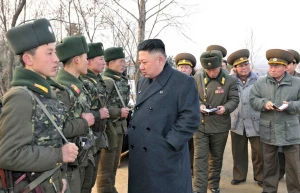
Ukraine advances in 3 directions: limited gains and Russian troops’ movement – ISW
Ukrainian forces conduct counteroffensive actions on three areas of the front. Their limited gains prompted Russian troop movements
The Institute for the Study of War reports this.
"Ukrainian forces conducted counteroffensive operations on at least three sectors of the front on June 15 and reportedly made limited gains," the report said.
ISW, referring to Russian sources, has stated that the Ukrainian Defense Forces achieved some success to the south of Bakhmut, near Andriivka, which is approximately 10 km away from Bakhmut. They were able to cross the Siversky Donets Canal in that area.
According to ISW, Russian sources also mention that Ukrainian troops have made limited movements along the western border of Donetsk region and the eastern border of Zaporizhia region, around 12 km south of Orikhiv.
ISW also reports that Russian sources indicate a continuous movement of reinforcements by Russian troops to the Bakhmut area. This suggests that Russian troops are still being sent to the Bakhmut district in response to Ukrainian counteroffensive operations.
Ukraine’s counteroffensive
-
On June 4, the Ukrainian Armed Forces launched a counteroffensive on the southern frontline, continuing a series of offensives near Bakhmut and in other directions.
-
On June 24, the Ukrainian Defense Forces officially confirmed the liberation of the territories near Krasnohorivka in the Donetsk region, which had been under occupation since 2014.
-
On the morning of July 3, Hanna Maliar reported that the Defense Forces advanced in the southern and eastern directions. Over the past week, the Ukrainian military liberated about 38 square kilometers.
-
On July 4, it was reported that Ukrainian military forces were advancing on the southern flank around Bakhmut in Donetsk region and in the south.
-
On the morning of July 5, the General Staff of the Armed Forces of Ukraine reported that the Ukrainian Defence Forces were continuing their offensive in the Melitopol and Berdiansk directions, consolidating their positions, inflicting artillery fire on the identified enemy targets, and carrying out counter-battery operations.
-
On July 7, Deputy Defense Minister Hanna Maliar reported that the Defense Forces were advancing on the flanks of Bakhmut and grinding the enemy to a halt in the south, with the ratio of Russian army losses being more than five times higher.
-
Later, Chechen leader Ramzan Kadyrov said that the Chechen special forces Akhmat had been redeployed to the Bakhmut direction: the Kadyrov soldiers were allegedly in Klishchiivka.
-
On July 10, the commander of the Ukrainian Armed Forces, Oleksandr Syrskyi, emphasized that Bakhmut was under the fire control of the Defense Forces. The General Staff emphasized that since the beginning of the counteroffensive, the Ukrainian Armed Forces had liberated 169 km² of Ukrainian land in the Melitopol and Berdiansk directions, an area commensurate with the size of Odesa. In the Bakhmut sector, the Defense Forces have recovered 24 km² of Ukrainian territory.
-
On July 12, the General Staff reported that the Ukrainian Armed Forces had hit the Duna hotel in Berdiansk, as previously reported. Russians were taking away the bodies of the killed soldiers by truck. Ukrainian aviation launched 6 strikes on the Russian forces' military positions and 2 on enemy air defense systems. Over the course of the day, missile and artillery units destroyed 1 control center, 16 artillery pieces at firing positions, 4 anti-aircraft missile systems and 2 enemy electronic warfare stations.
-
According to the General Staff on July 13, the Ukrainian Defense Forces continue to conduct offensive operations on three frontlines - Bakhmut, Melitopol, and Berdiansk. At the same time, the Russian army is using reserves and moving its troops.
-
On July 14, it was reported that the Defense Forces in the Melitopol direction had advanced 1,700 m to the south and southeast in a week.
-
On July 15, The New York Times reported that the AFU had changed its counteroffensive tactics, focusing on attacking depleted Russian forces with artillery and long-range missiles rather than attacking minefields.
- News












































